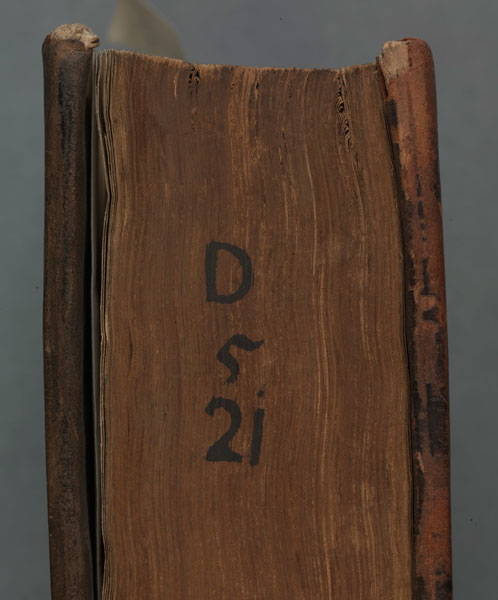The Old Library
Within 25 years of its foundation in 1592 Trinity College had amassed an impressive library. Over £600 had been subscribed to the College in the
early 1590s by serving officers in Queen Elizabeth’s army in Ireland but payment was deferred until 1601. This money was entrusted to College
Fellows Luke Challoner and James Ussher (afterwards archbishop of Armagh) to travel to London to make book purchases. By 1610 the Library’s
holdings stood at almost 4,000 volumes, and the collection was built up steadily over the
following century.
The English bookseller and author John Dunton visited Trinity College in 1699. In his book The life and errors of John Dunton late citizen of London (1705) he describes how the original Library was housed above the Scholars’ chambers which ran the length of one side of the small Elizabethan square known as the ‘Quadrangle’. It was divided by a partition into inner and outer rooms, and only the Provost, Fellows and resident Bachelors of Divinity had access to the inner library. Dunton described the collection of volumes as ‘a great many choice books’, and he extolled the ‘choice and curious books’ of the great scholar Archbishop Ussher, whose collection came to the College in 1661. On display in this exhibition are some volumes from Ussher’s library, which formed the nucleus of the Library’s medieval manuscripts collection, and was housed behind a lattice‐work division at the west end of the Library.
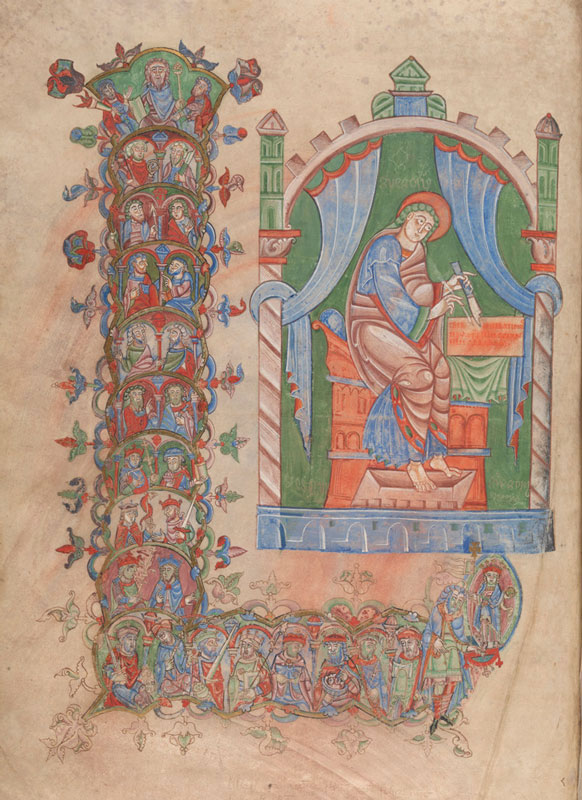 Winchcombe New Testament and Psalter
Winchcombe New Testament and Psalter
Gloucestershire, England, 12th century
This manuscript originated in the Benedictine abbey of Winchcombe and came to Trinity College Library in 1661 as part of
Archbishop James Ussher’s collection.
TCD MS 53 folio 7v
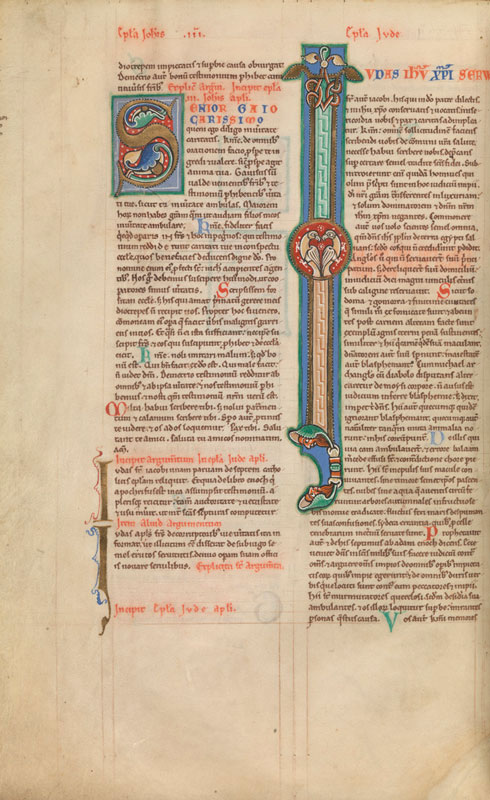 West Dereham Bible
West Dereham Bible
Norfolk, England, 12th century
This is the second volume of a two‐part Bible, possibly produced at the Abbey of St Albans, Hertfordshire, for presentation to the West Dereham
canonry, founded in 1189. It formed part of Archbishop James Ussher’s library.
TCD MS 51 folio 161v
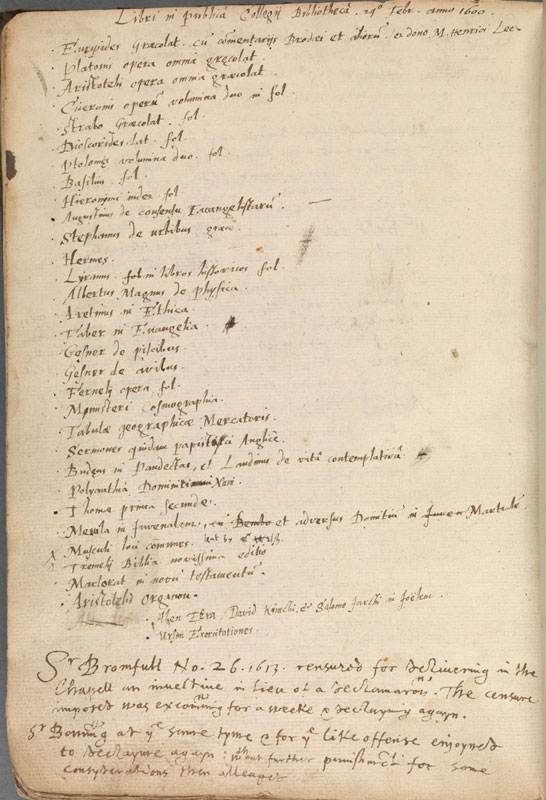 Particular Book of Trinity College
Particular Book of Trinity College
The Particular Book is the earliest extant record of Trinity College. It contains records of receipts and expenses, with resolutions of
the Board and memoranda by various Provosts, dating from the foundation of the College in 1592 up to 1641. This inventory of
books held in the Library, dated 24 February 1600/1601, lists 30 printed books (one is on display in the exhibtion: Aristotle’s Omnia
opera) and ten manuscripts.
TCD MUN/V/1/1 folio 128v
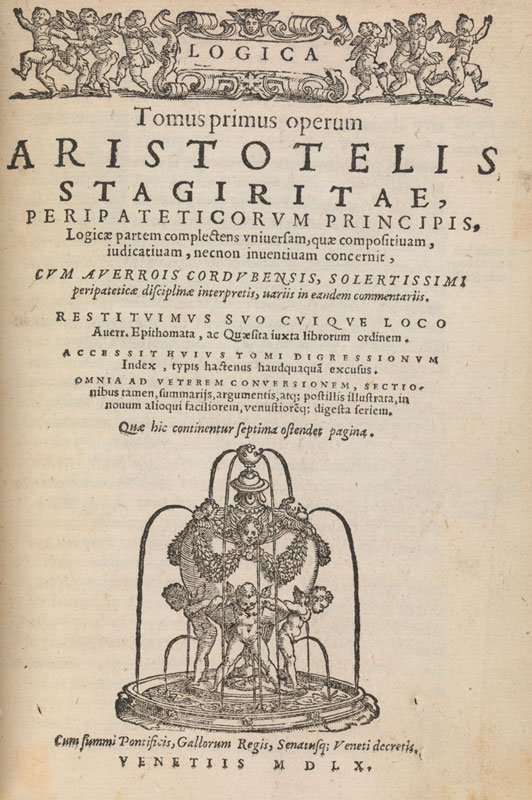 Aristotle Omnia opera
Aristotle Omnia opera
Venice, 1560
Title page of the first volume in an 11‐volume set of Aristotle’s works which appears as the third item in the list of books included in
the Particular Book.
L.m.1
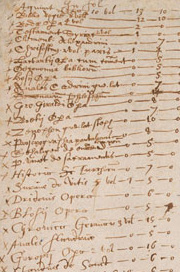 Bookseller’s receipt
Bookseller’s receipt
[1601]
A receipt from bookseller Gregory Seton, of Aldersgate, London
for books sold to Vice‐Provost Luke Challoner on behalf of the
College Library.
TCD MS 2160a/10
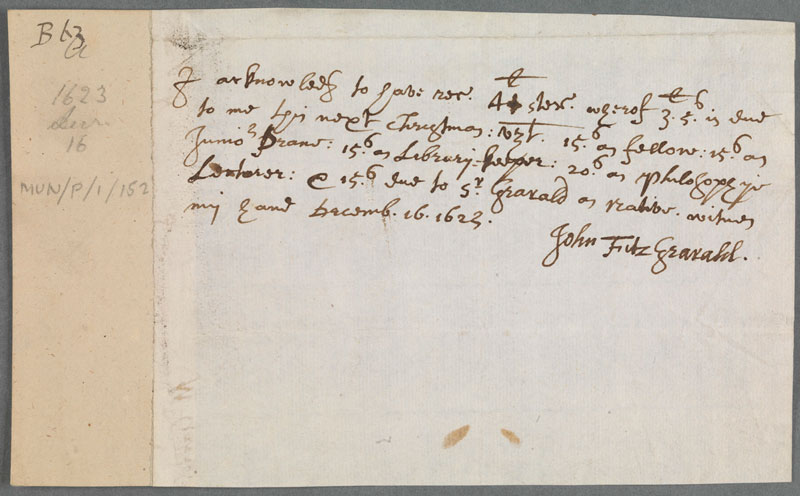 Keeper’s salary
Keeper’s salary
Statement of payments due to John Fitzgerald, including sum of
15 shillings for his service as Library Keeper (1618‐c1624).
TCD MUN P/1/1520
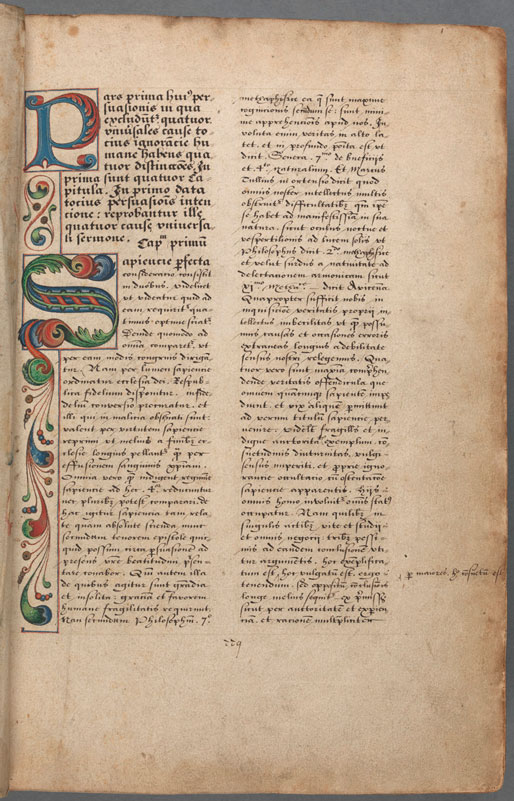 Roger Bacon Opus Majus
Roger Bacon Opus Majus
England, 16th‐17th century
Copy of the 13th‐century philosopher Friar Bacon’s Opus Majus, a treatise – written at the behest of Pope Clement IV – that ranges
over all aspects of natural science, from grammar and logic, to mathematics, physics and philosophy.
TCD MS 381 folio 1
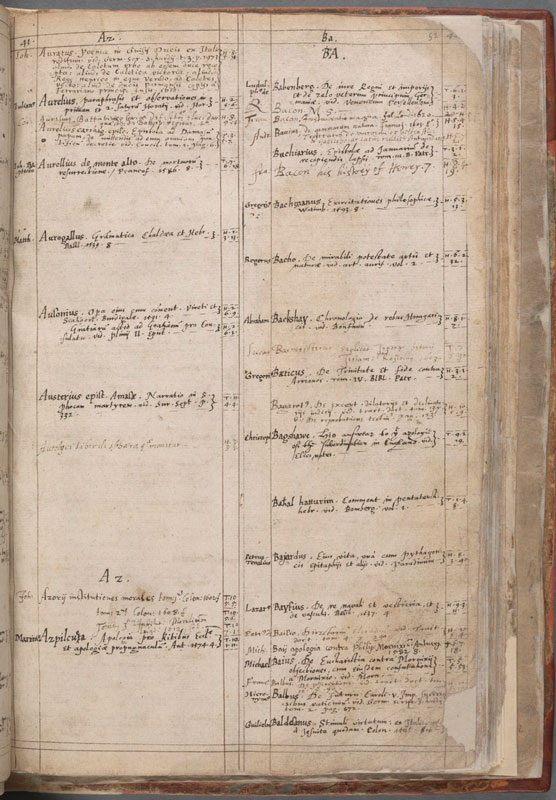 Trinity College Library catalogue
Trinity College Library catalogue
1610
This author catalogue, compiled initially by Ambrose Ussher, the first Library Keeper (1601‐1605), records almost 4,000 works,
including one of the College’s prized manuscripts (TCD MS 381), attributed to Roger Bacon.
TCD MS 2 folio 52r
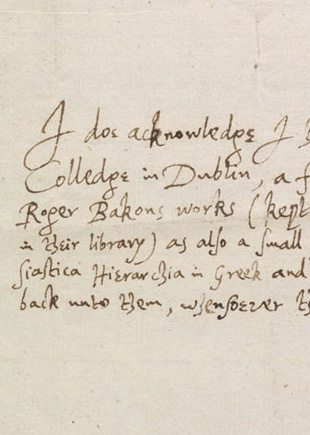 Ussher’s receipt
Ussher’s receipt
This receipt, in Archbishop James Ussher’s hand, records that he borrowed from Trinity College Library ‘a fair manuscript volume of
Roger Bakon’s works … as also a small printed book of Dionysius, his Ecclesiastica Hierarchia in Greek and Latin’. The Bacon
manuscript survives in the collections as TCD MS 381 but the work of Dionysius is no longer present.
TCD MUN/LIB/10/8

